







Tebua Tarawa was overtaken by the ocean in the 1990s, along with Abanuea, another islet in Kiribati. These islands were used by fishermen, but were otherwise uninhabited by humans. Over the past 30 years, rising seas now threaten almost all populated parts of Kiribati. Most of its people live within 6 feet of the sea level. The rising waters are consistently flooding homes, destroying crops and submerging whole cultures. Forget moving a village, or even a capital, as Indonesia is doing relocating theirs from Jakarta to Borneo. Kiribati is one of the first victims of climate change – the whole republic could be submerged within decades and its entire citizenry will need somewhere to live.
Yet, the Republic of Kiribati may not be the first place to truly be swallowed by climate change. This past July, our planet saw the record for hottest day surpassed not once but three times, and Phoenix shattered its record of hottest month ever recorded. As we see droughts, floods, hurricanes and heat waves increase in amplitude and frequency, other peoples across the world will be put in unenviable positions to stay or go, to adapt or abandon. The threats to a thriving global future are visible right here and now and with growing frequency unless we make decisions to alter how we relate to our world and its systems.
In real-time, we bear witness to the dangers of being too slow to respond. Yes, people and governments have made efforts to mitigate the effects of warming temperatures and stronger storms, some even significant. Programs such as target setting through the U.N. Sustainable Development Goals and transformations of the energy system, with investments in solar, wind and hydrogen beginning to shift human society away from fossil fuel power sources are obvious leaders yet have

not been fulfilled. Efforts to decarbonize industry and shift agriculture practices also need more attention. It is clear that the commitments are neither widespread nor sufficient to chart a new course for societies to live within the bounds of available resources provided by the life-supporting systems of our planet.
The Intergovernmental Panel on Climate Change’s Sixth Assessment Report released earlier this year clearly states that we will miss the ambitious target to keep global warming within 1.5°C (2.7°F) of pre-industrial temperatures. Scientists project the world might temporarily experience 1.5°C (2.7°F) warming as early as 2027. More warming will mean greater sea level rise, more extreme heat, worsening damage to agricultural systems and infrastructure, and escalating loss of species.
The IPCC report also recognized “hard and soft limits to adaptation have been reached in some ecosystems and regions.” We continue to endanger our ability to survive on this planet by straining the adaptive capacity. Some systems have physical limits to adapt. By not adapting more strategically we push our planet towards self-adaptation, putting humans in a position of threat to its survival. We have invested limited amounts of capital into the climate crisis, and now mitigation, adaptation, and loss and damage are competing for that finite pool. What do we owe the people of Kiribati, for example, who have contributed so little to the climate and environmental change that caused the sea level rise that threatens to submerge their entire homeland?
Addressing planetary pressures combined with societal constraints and injustices can appear daunting, but we cannot stop trying. We must evolve our processes and disrupt practices where necessary to accelerate societies toward actions that improve human and planetary well-being, which are inexorably linked. True revolutions typically are forged in places where people become desperate to see a new future. This summer has pushed despair, and urgency, but still without genuine direction.
At the Julie Ann Wrigley Global Futures Laboratory, we must grow our commitment to meaningful policy options to resist inaction. Our ideas and research, done in tandem with partners, inform decision making and lead to better outcomes. This has never been more evident than in the activities conducted by the Knowledge Exchange for Resilience, Sustainable Cities Network, Walton Sustainability Solutions Services, Arizona Water Innovation Initiative or the Southwest Carbon Hub, just to name a few. Relationships with local municipalities and the Arizona state government, as well as service providers such as our region’s utility companies, are testaments to the success of reaching beyond the boundaries of the university.
We are evolving the Decision Theater so that we can model a multitude of scenarios around how to address climate change and inform policymakers and industrial leaders to make not just better decisions, but the best decisions. We must think bigger and translate our work to national and international influence, such as the growing relationship between our global partnerships team and the Inter-Parliamentary Union. We must build new coalitions, as we are doing through the 2023 Global Futures Conference that convenes in New York in September. We must institutionalize these partnerships and add capacity to meet this aspiration.
We need an innovation revolution, a non-violent one, that reorients our human systems and practices back in line with Earth’s systems.
 Peter Schlosser Vice President and Vice Provost, Julie Ann Wrigley Global Futures Laboratory, Arizona State University
Peter Schlosser Vice President and Vice Provost, Julie Ann Wrigley Global Futures Laboratory, Arizona State University
ASU exhibit, “Mission Future: Arizona 2045,” sees Arizona through the eyes of a younger generation, all grown up
Adult siblings Lucas and Isabela debate innovation against tradition as they run their family farm. Twin teens Zoe and Ava ponder whether they will live on Earth or shift their career aspirations off-planet.
These stories are the core of “Mission Future: Arizona 2045,” a new exhibition at the Arizona Science Center. The interactive experience, developed by Arizona State University’s Center for Innovation in Informal STEM Learning in partnership with NASA, opened early this year and combines space and earth science, storytelling, and hands-on elements.
“‘Mission Future: Arizona 2045’ allows guests to see ourselves in our potential collective future as Arizonans,” said Sari Custer, chief of science and curiosity at the Arizona Science Center.
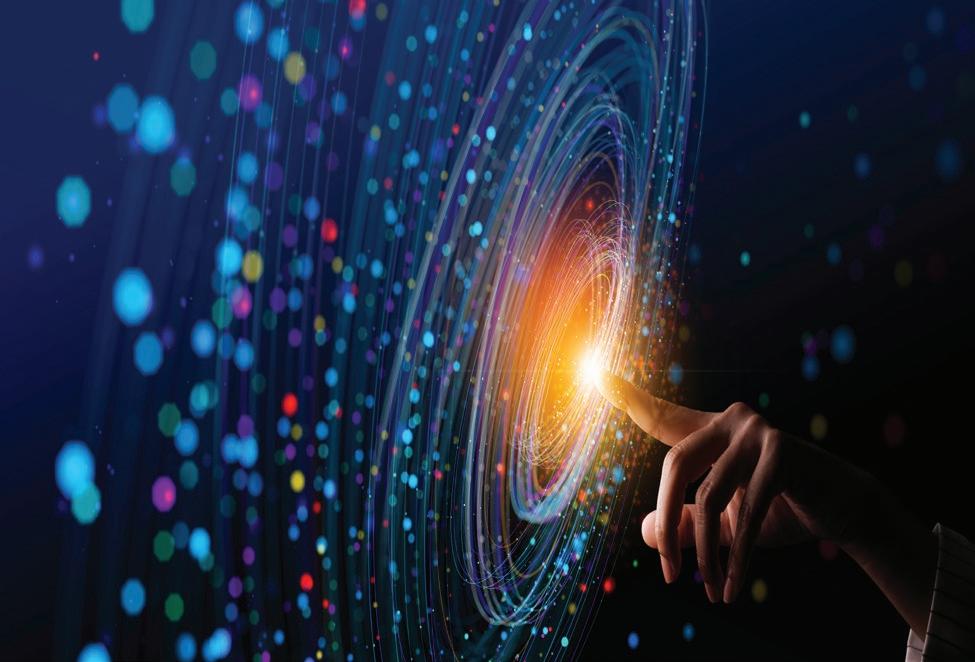
“We’re thrilled to be able to partner with ASU, the National Informal STEM Education Network and NASA to bring this exhibit to life and help participants think about the impact their everyday actions have on our immediate ecosystem.”
By following the perspectives of Lucas, Isabela, Zoe and Ava via video recordings, audiences of all ages are prompted to think about a future driven by human actions both on and off Earth.
“We’re seeing the future through the eyes of generations that will inherit the planet from us,” said Paul Martin, a research professional in the School for the Future of Innovation in Society and co-director of the Center for Innovation in Informal STEM Learning, or CIISL, which is based within the Julie Ann Wrigley Global Futures Laboratory. “‘Mission Future’ takes us to the future, but it’s close enough to the present that it’s still real. The person telling you their story could be your child or grandchild.”
Visitors are guided through the experience by a fifth fictional character: AILI. AILI is an Artificial Intelligence Learning Investigator who, in this fictionalized future, studies how humans interact with systems to create desirable future outcomes. AILI tells exhibition visitors that they are not a real person, but they are still alive — “don’t overthink it.”
AILI was created for this exhibition through a combination of AI and human efforts: their voice and general design were both created by AI, which serves as an example of how quickly technologies can advance.
“We were excited to actually have AI be involved in the exhibit,” said Rae Ostman, a research professor in the School for the Future of Innovation and Society and co-director of CIISL. “The exhibit focuses mostly on climate change and earth and space exploration, but including AILI was a way to weave in the idea that a lot of things will be different in our future, including how we’re interacting with AI.”
The creation of AILI was largely led by Nicholas Pilarski, an associate professor in The Sidney Poitier New American Film School and the School of Arts, Media and Engineering. Pilarski and his team used Unreal Engine, a 3D computer graphics game engine, to design the videos shown in the exhibition. These videos were created using a blend of AI and human
elements. For example, an actor modeled AILI’s movements, but AILI’s voice was created using AI.
“We thought about the AI pipelines we designed like a partner, or a tool, in the design process that allowed us to quickly prototype and come up with ideas,” Pilarski said. “I think we had a lot of fun, just thinking about it as a rough draft that then we can build on.”
Using AI to generate the videos showcased both the technology’s abilities and limitations. Zoe’s storyline in the exhibition takes place on a space station in low Earth orbit. In an early version of the AI-generated backgrounds, the program included a staircase, which would be unnecessary in a microgravity environment. This element had to be corrected by Pilarski and his design team.
It was important in the world-building of the exhibition to find a balance of present and future technologies. Martin, Pilarski and Ostman researched up-and-coming technologies that they believed could feasibly become widespread in the next 20 years. They have seen some of their predictions come to fruition even in the months that followed the opening of “Mission Future.”

Right around the same time that the exhibition opened, the artificial intelligence chatbot ChatGPT skyrocketed in popularity. Conversations about AI’s role in society boomed — meanwhile at the Arizona Science Center, the fictionalized AI program AILI was guiding exhibition visitors through the experience. Characters in the exhibition are shown working on daily tasks with digital hologram screens. In June, Apple announced its Vision Pro, the company’s “first spatial computer.”

Twenty years can feel both like tomorrow and an eternity away, especially when it comes to developing technologies, and Ostman said the tools on display were created from the seeds of today’s advancements. Ostman said it was important to find a balance between unexpected changes and present-day familiarities, both for realism of the experience and to support the exhibition’s self-guided nature.
“The exhibition is an immersive space where you can do activities without being given a list of instructions or explanations,” she said. “You gather information from the context around the activities, so it really puts you in the world.”
The exhibition also suggests that even though people may have differing ideas about what the future should be like, all perspectives are important. Characters Lucas and Isabela disagree deeply on what should happen with their family ranch, but as siblings, they love each other, they cooperate, and they are a team despite their differences in opinion.
“The first step for any change is empathy across the way that people solve,” Pilarski said. “We are all different, and we all have different ‘mental models.’ I think that’s actually a strength of humanity as we tackle problems in the future. Our characters have different opinions and different ways of thinking, but at the end of the day, they care about each other.”
Ostman and Martin, both senior global futures scientists with ASU’s Julie Ann Wrigley Global Futures Laboratory, agree that the future shown in “Mission Future: Arizona 2045” is just one possibility.
“What will the future be like?” AILI asks exhibition visitors. “That’s for us to decide.”

Erinanne Saffell’s first memory consists of watching her family place sandbags around her family house in Scottsdale to prevent flooding from Tropical Storm Norma in 1970. Saffell, who would have been around two years old at the time, now serves as a Senior Global Futures Scientist and teaching associate professor in the School of Geographical Sciences and Urban Planning. As the state climatologist and director of the Arizona State Climate Office, Saffell provides context about the climate of the state that shaped her first memory.
Saffell’s office actively works to increase climate literacy across the state through research, outreach and education. She was appointed as the Arizona state climatologist in 2021 and confirmed by the Arizona Senate in 2022. A three-time graduate of Arizona State University for her bachelor’s, master’s and doctoral degrees, it is only natural that she would apply her expertise to teach at ASU while also working as the state climatologist.
“Every experience I’ve had has prepared me, in some way, for my role in serving the state,” Saffell said.
For this edition of Futurecast, Saffell discusses Arizona’s current summer season, heat solutions and her role as the state climatologist.

Question: This summer’s record heat (at least here in Arizona) gave us our first sense of what life at +2 degrees Celsius would be like. Is this the new normal?
Answer: A climatologist identifies weather patterns and trends, but not every location across the state has the same patterns. Statewide temperatures have increased about 2.5°F since 1895, but zooming into Phoenix, the number of 110°F or higher days has increased five times since 1895, with an average of 27 days each year of 110°F or higher. In 2020, Phoenix almost doubled that average with 53 days of 110°F or higher, and 2023 might even break that number. Identifying different trends helps identify thresholds, which ultimately can help when planning resources needed to improve a community’s resilience.
Q: How much was this summer’s weather, especially in the Southwest with the heat waves and the Northeast with the rains and flooding, due to El Niño?
A: El Niño is an interaction between the atmosphere and ocean and often causes global temperatures to increase. The July heatwave in the Southwest was influenced by several factors, including El Nino.
Q: From a climatologist’s perspective, how might all of these factors (climate change, human impact/interference, naturally occurring weather systems, etc) continue to play on each other as we look to the future if humanity continues on its current path?
A: Attribution researchers found that July temperatures in the Southwest were around 3.5°F warmer due to climate change. The National Hurricane Center just issued a first-ever Tropical Storm Watch for Southern California. What becomes increasingly important is to prepare for these trends.
Q: Along with record heat, this summer has seemed to be one of the weakest monsoon seasons in state history. How much of that is real versus feeling like a weaker monsoon because of the heat?
A: Arizona just experienced an amazing cold and wet winter, which helped mitigate drought and support the state’s water supply. June, which is usually a very hot month, was actually cooler than normal. These factors delayed the onset of the monsoon this year, but every summer is different.
Q: July’s heatwave was an example of just how critical it is to be “cooling secure” in not only Arizona, but all over the world. As climate change further drives these increased periods of high temps, what are some other barriers that may prevent a safe summer season?
A: I grew up in Arizona, and my elementary school only had evaporative coolers, which are limited in cooling. My first car didn’t even have an air conditioning unit installed. These normal situations from 50 years ago are no longer effective.
Q: Are any of Arizona’s urban centers potentially at risk of an event similar to what we have just seen in Hawaii or what was happening in Italy with dryness and heat contributing to runaway wildfires that are able to cause so much destruction?
A: Wildfire is part of Arizona’s ecosystem, but unfortunately, wildfires are burning hotter, killing forested areas and creating burn scars. After the wildfire, those areas become susceptible to debris flows that can impact local communities. Arizona actively works each year to mitigate wildfire potential across the state, but a hot atmosphere is a thirsty atmosphere, which desiccates vegetation and ultimately provides more fuel for wildfires.
Q: Despite climate change already impacting lives, as demonstrated by this summer’s unprecedented heat, there is still some resistance and hesitancy to support initiatives that relate to climate change. Do you think that will change as we see more regular extreme climate events?

A: I think it’s important for folks to understand how climate and weather operate in their own neighborhood. In doing so, they can better understand what’s happening in the climate system. For example, folks can use a simple infrared thermometer to identify the hottest surfaces around their house, finding areas that might benefit from a shade tree. Blocking sunlight with a shade tree can often be the easiest way to decrease the heat load in their house. Decreasing the heat load in their house usually reduces their
energy requirements, which can ultimately help their community.
Q: What do you see as the Arizona/Southwest climate trends for the next year, next five years and next ten years?

A: Temperatures in Arizona are increasing, but nighttime temperatures are increasing more than the daytime temperatures. That’s the result of the urban heat island, where buildings and roads act like a solar oven. Every city and town experiences an urban heat island, but it’s also something that can be solved through innovation and planning.
Q: What can we (ASU) do as a research institution to prepare and develop solutions for these futures?
A: Maricopa County is the hottest, most populous county in the country. ASU researchers have been studying and testing Phoenix’s urban heat island for decades. Quantifying microclimates using the innovative MaRTy cart and testing human heat health with the ANDI thermal manikin provide essential data to help mitigate dangerous heat in communities. ASU is leading the world in solving issues of heat health.
Q: Who else besides science/researchers and academic institutions need to be at the table to implement solutions?
A: The people affected by these issues should have a role in finding solutions.
Q: What kind of feedback, if any, have you received from the community members as the state climatologist regarding rising temperatures?
A: Arizona has been dealing with drought, water scarcity and heat probably more than most U.S. communities. I think the Phoenix area was one of the first for National Weather Service partners to actively respond to NWS heat warnings by opening cooling and hydration centers. I think Arizona has some excellent ideas and practices that can help other communities experiencing these issues for the first time.


It is clear that electrification is no longer a concept of the future. At the same time that humanity assesses the role of fossil fuels in a sustainable world for future generations, electric transportation, solar panels and appliances are becoming increasingly common. Electric cars frequent Phoenix streets: One almost cannot drive in the East Valley for more than 10 minutes before encountering a Waymo vehicle on the roads. However, with the increase of renewable energy comes unanswered questions about implementation. Lindsay Smith, Lauren Keeler and Danae Hernández-Cortés discuss the present and future of electrification, the role of communities in shaping their energy futures and the importance of equity as the world transitions from our current imperfect energy system.

Danae Hernández-Cortés is an assistant professor in the School for the Future of Innovation in Society and the School of Sustainability within the Julie Ann Wrigley Global Futures Laboratory. She joined ASU from the University of California Santa Barbara, where she received her doctorate in economics with an emphasis in environmental science. HernándezCortés’ research explores equitable energy transitions, environmental justice and environmental economics.

Hernández-Cortés: Right now we see electrification being one of the more viable paths to achieve some carbon neutrality. Of course, this carbon neutrality would not only deal with electrification and the replacement of natural gas stoves or cars, but also with the investment in renewables. From the consumer standpoint, we can have this supply of electricity from renewable sources that are different from fossil fuels.
Lauren Keeler is an assistant professor in the School for the Future of Innovation in Society. She is also the chair of the undergraduate program in innovation and society and director of the Just Energy Transition Center at ASU. She works with communities, governments, corporations and utilities to envision and develop strategies to achieve just and equitable outcomes for communities impacted by the energy transition.
So where we stand right now in terms of carbon neutrality plans for some governments, even within the U.S. or abroad, we are seeing an interaction of electrification from the consumer side, but also this increasing supply of renewables. This helps us achieve these electrification goals from the consumer side in a way that is clean. That being said, there’s a lot of heterogeneity across locations in terms of how electrification will take place, or what are the main objectives within that electrification.
Lindsay Smith is an assistant professor in the School for the Future of Innovation in Society. She studies the role of new technological innovations in postconflict settings, and her research and teachings assess how and when new technologies can be used to address human suffering caused by violence and dispossession.


To give a very simple example, California has a bunch of natural gas stoves and a bunch of natural gas appliances that are still trying to get electrified. But here in Arizona, we do not have the same rates of natural gas appliances. So that means that some areas are really pushing to electrify but at the same time, we have different levels of electrification already. So some of these policies are different in intent and scope.
Keeler: I co-authored a report in 2022 called “Pathways to a Carbon Neutral Arizona Economy.” In that report, we investigated more or less how we get to zero net carbon emissions in the Arizona economy. And when we say economy, we mean both our buildings — homes and businesses — as well as transportation. Reducing the first 80% of emissions requires substantial electrification across the board and for the sake of this report we were specifically focused on the last 20% of emissions, because that will be harder to remove.
So all pathways to carbon neutrality assume that we are moving appliances and vehicles from carbon-fuel-based sources to electrification. The other thing that I will add to that is we do not have a good, cost-effective, widely available substitute for liquid- and gas-based fuel sources that are carbon free. But we do have electrification, and that’s why you see battery electric vehicles dominating the incentives that are coming out of the federal government and the manufacturing that is being done by industry. At present, that is the best technology available for the price.
What are some of the barriers that exist to increasing electrification?
Keeler: I think from energy generation, to its distribution, and to its consumption, there are a number of barriers. They’re not insurmountable, but there are a number of barriers. On the energy generation side, one of the things that you will frequently hear is that we are transitioning from an energy system that could be ramped up in response to demand. With coal plants, when there was more demand coming from consumers, you could increase the energy output of your coal plants in response to that. That isn’t the case with electricity.
There is the need to not only add renewable energy onto the grid, but there is also the need for battery storage and there’s a need to shift when we are using energy. Previously, utilities incentivized nighttime, post peak use of energy, when energy would be really cheap. You come home and you plug in your electric vehicle, let’s say at 9 p.m., and you allow it to charge overnight. Well, that’s being charged with coal; in a decarbonized and electrified future, you’re going to want to charge those vehicles during the day. So that’s not necessarily a barrier, but it’s one of the things that’s being sorted out on the distribution piece.
The grid needs to be updated to accommodate the amount of demand. Right now you have people putting level two electric vehicle chargers
in their homes. If you have enough of those in a neighborhood, you need to upgrade the transformers that are in those neighborhoods. If you have a level two electric vehicle charger and you decide to get rid of your gas stove and put in the electric induction stove, and maybe you decide to put in a solar panel, you may find that you need to upgrade the panel at your house. So we are talking about changes to the way that energy is being generated, the way that energy is being transmitted and the way that it is being received by the consumer.
And then finally, from a consumption standpoint, we have the need to access and adopt new technologies. Electric vehicles don’t feel new, but their widespread adoption is new and so they aren’t currently accessible for everyone. So many people are still priced out of the market of electric vehicles. There is an increasing market for used electric vehicles, but people also need to be able to charge them. So you need the charging infrastructure available where cars are parked, either at people’s homes and multifamily residences, or in workplaces and public spaces, so that those vehicles can be charged.
Smith: Lauren’s comments make me think about how different countries and even different local governments will make different choices. So there’s no one-size-fits-all answer to this. And even if the U.S. invests in really impactful technologies or solutions, I tried to think about how that would get applied to a different country. We are talking about replacing stoves but lots of people don’t even have stoves — they’re still burning wood, right? I mean, there’s a whole range of challenges and those challenges can vary greatly based on geography, even just within the United States. Each infrastructure that was built at a particular time relies on a particular model of energy production. As we begin to think about transitioning to a new one, I don’t think that we have invested as much in
really localizing those transition processes, especially outside of the United States.
I wonder sometimes about how much our process is transferable to other places. If we’re really going for carbon neutral, how do we make sure that, you know, India and Brazil and Mexico can leapfrog these technologies? I think that will be a really, really important process moving forward.

Hernández-Cortés: To add to that, one big thing that plays a role here is power transmission lines. Right now, the way we have built power plants is very different from where renewables are being located. For example, you can see Wyoming, where we have incredible wind potential, but there’s not that many people in Wyoming. What we need is to move the electricity that we’re generating in Wyoming to get to other areas where
it could be used, and there are some legacies of infrastructure that have to be corrected for that.
For example, we do not have high capacity transmission lines in all of these areas where we have these renewables. And that’s not only the case in the U.S., but also the case in other countries in the Global South. For example, there’s a very nice paper that showed that in Chile, when you invest in some projects that could move electricity from where it’s generated to where it’s going be used, it increases the potential of renewables because now people are using their electricity and their electric appliances more because it’s cheaper to do it. So I think the litigation of that, the infrastructure investments we will need on the generation and transmission side, that could be a big barrier.
As we see a push toward electrification, what might that transition look like for those who are not currently “energy secure” and may be priced out of the electric options?
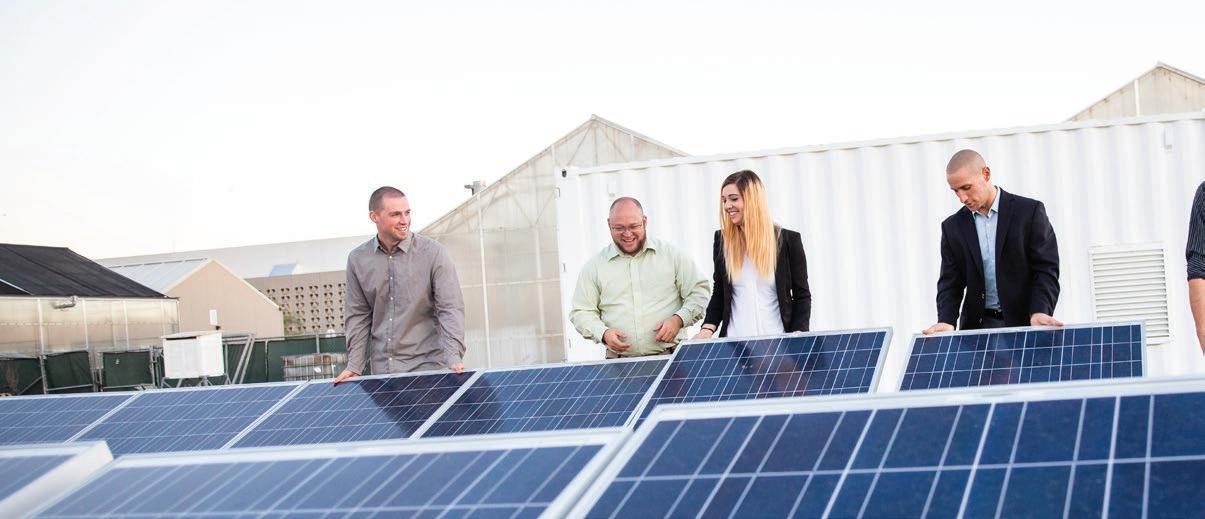
Keeler: To call back to Lindsay’s point, that answer depends on where you are. Coming from an Arizona context: In the Phoenix metro area, 93 to 94% of households have at least one vehicle. So it’s a fairly car-centric infrastructure, and therefore making sure that electric vehicles are accessible and that electric vehicle charging infrastructure is accessible — and both are affordable — is an important part of equity and mobility. But an electric vehicle strategy that doesn’t also include other forms of transportation is not equitable. We should also be thinking about the role of electric vehicles in a transportation system that includes public electric transportation. As well as walking and biking, when it isn’t 118 degrees of course.
Smith: I think that the question of what an equitable future will look like is going to depend a lot on the empowerment of communities to think about what they want their transportation futures to look like. We see this with pushback on gas prices and mobility issues in cities. People are relying on cars, and now these gas
prices can price people out of it. Changing infrastructure for public transportation doesn’t always meet people’s needs, but we see coalitions of activists drawing on the Sustainable Development Goals and other kinds of modes to begin to call on the government to say, “Okay, we want to have mobility, the right to move and to be transported. This is a right that we’re guaranteed.” They’re beginning to really push the government to develop community based plans for what they want that to look like.
Creating spaces for public deliberation in communities is not like a big national deliberation. It’s important that community members come together and think about the challenges they face, what they want their transportation futures to look like. And then, those local governments have to listen to people and put money and initiatives behind that.
For example, what if what communities want is an expanded light rail? Rather than just kind of letting Waymo and private industry come in and decide what the transportation infrastructure is going to look like as electrification happens, the directing force should be the communities. Without that space for public deliberation, and an active community of people who are calling for
alternative futures, whose voices can be heard and listened to and supported and elevated, I think we’re going to see a lot of the same inequalities that we saw built into our previous energy infrastructure.
Hernández-Cortés: I’ll add that some of that groundwork to address disparities is already happening in the United States — the Justice40 Initiative is one example. Now that being said, I think that electrification has to consider all of the potential implications from all of the parts of the supply chain. So for example, when we think about batteries, who are the communities that are affected by mining? That’s something we need to consider because most of them are going to be from rural communities in the Global South. We’re already seeing it in Bolivia, Chile, the Congo, etc. We need to consider that from the beginning.
We also have to consider where the renewable electricity projects are going to be placed. Are they going to be placed in communities that have been historically marginalized? Additionally, there is the access issue which we’ve touched on here as well: Who has access to buy an electric vehicle? What type of electric vehicles can people buy, and are they used or are they new? Who will have access to buy solar panels? Are they renters, or are they owners who are the ones benefiting from those
subsidies already? And who can benefit from all those technologies for electrifying the grid?
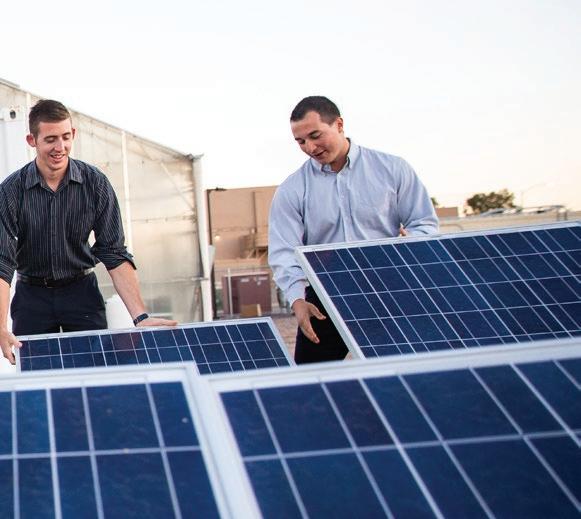
I see this electrification push as a tool that can help solve some of these disparities, but it could exacerbate those disparities if they are not considered from the design of the implementation.
What, if any, are the dangers as we continue to rely on electrification going forward?
Smith: To give a personal example, I’ve been paying close attention to Texas this summer. My mom is there, she had a heart surgery and was in the hospital. At the same time, there’s a heat wave and Texas has a notoriously bad grid. I was worried about what would happen to her if the power went out. It shows what can happen when we haven’t invested in the grid or all of our systems are reliant on it. And I’ve certainly seen people who are concerned that the next hurricane-level extreme weather event that’s going to hit Texas is actually going to be a heat wave. If the grid in Texas goes down, people are going to die because we don’t really have a backup system for air conditioning. And obviously, that’s not necessarily related to things like heat maintenance in a hospital, the way I was concerned about my mom, but that is a scenario where energy backup systems would be lifesaving.
Keeler: I think that the vulnerability piece is really important. I do want to highlight Texas during the freeze in 2021. That was caused by failure to maintain the natural gas plants. You don’t automatically have a robust grid with fossil energy. And so transitioning to renewables, in addition to electrification, requires updates to the grid that may be different from ways you would update a fossil-fuel-based grid. But in California and Arizona, we are in a little bit better of a position than Texas because we’re in the western interconnection, and so
we can share electricity across the region as there are spikes in demand. What I do think is scary is what’s going on right now with the heat dome, where you see that the entire western interconnection is under heat warnings. So it isn’t just an isolated heat wave in Arizona, and that makes us vulnerable. Everybody is experiencing a heat wave at the same time.
I think we also need to get a lot better about how we advise people to keep cool with regards to the grid, and keeping the power on when you have extreme temperatures and spikes in demand. I don’t think that we are necessarily giving the kind of nuanced information that consumers need in order to keep themselves safe and keep the grid functioning. The other thing is maybe we don’t experience heat the same because we have health differences. And so as we think about keeping people safe, we need to think about the very different experiences that people have as a result of their very different bodies and very different infrastructure around them.
Hernández-Cortés: My concern with the idea of “over-electrification” is the danger of utility legacy costs, meaning that the way that we have our utility rates and how we price them do not incentivize people to leave some fossil fuels. So for example, the way that utility pricing happens in many places in the U.S. is that you add up all of the capital investment costs and you divide them over the number of customers that you have. This happens in electricity, this happens in natural gas, etc. What happens with natural gas, if you reduce the amount of people who are now going to be in a natural gas utility because you’re having more people electrify all of their appliances, then there are those who are staying with the natural gas utility because they can’t just replace them.
This means that you have this lower amount of people among which you’re going to divide the costs. This means that the people that are staying with the utility they couldn’t afford to
replace are those who are experiencing the highest increase of the costs. So that to me is one of the dangers of electrification — that without utility and electrification rights reform, utilities can charge more to people who are not investing in these types of decisions that could help electrify and therefore the people who are still going to experience the highest increases in prices are going to be the poorest.
Keeler: I do feel obliged to say I’m not worried about over-electrification. These concerns are all absolutely valid, but there is real potential to leapfrog progress by electrifying. Our current energy system is inherently inequitable — it’s not like we’re replacing a perfectly equitable system with an inequitable system. The problem is that we are existing amidst a bunch of systemic inequalities. And if we are not careful and aware of that and responsive to it, we will reproduce those inequalities in the next system. And so, all of these updates in infrastructure are opportunities to create more equality of access to infrastructure than we have in the system.

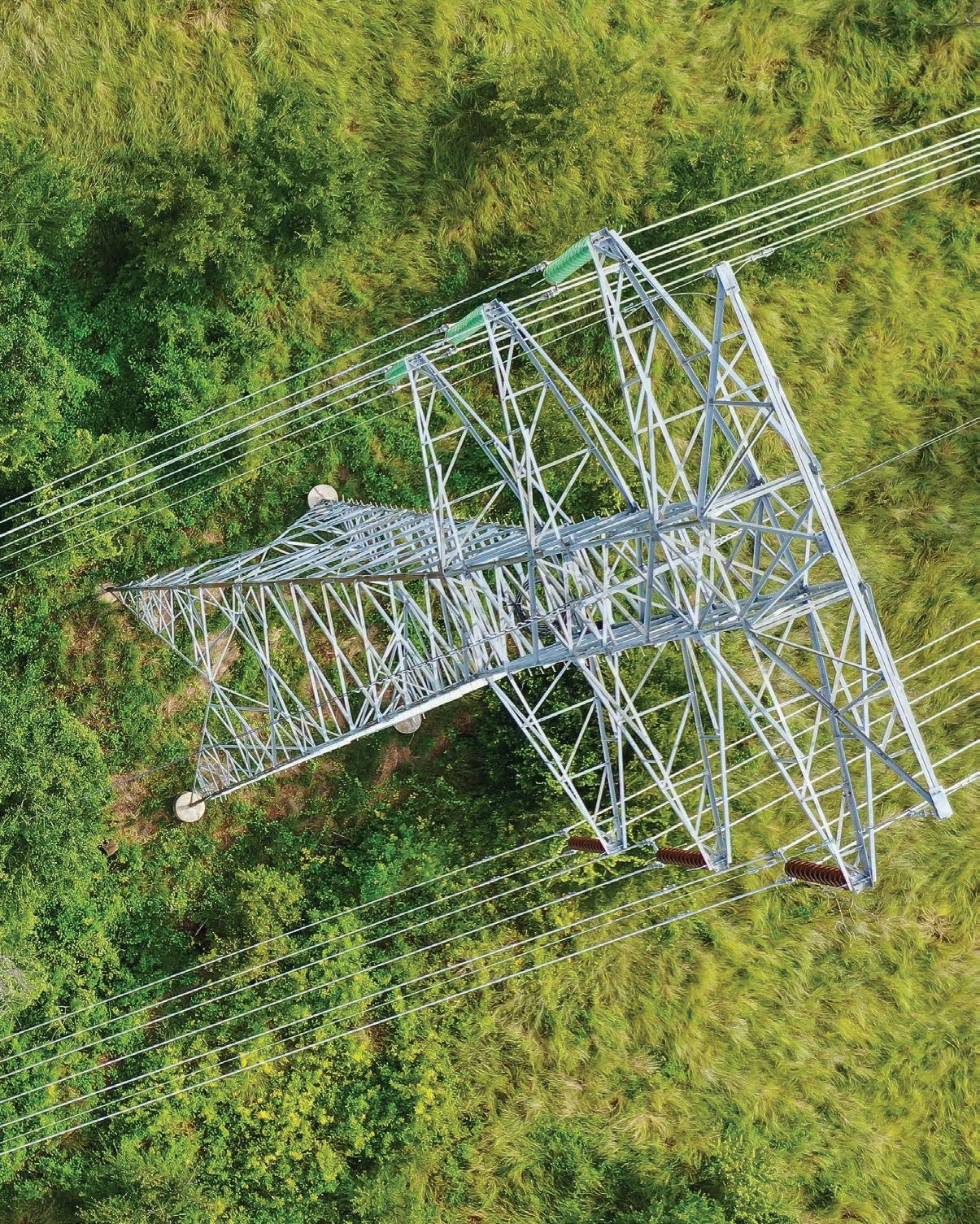

As humanity seeks pathways to a more sustainable future, we are constantly making decisions based on what we believe to be true. But what if those beliefs are incorrect?
We polled a group of our Global Futures Scientists and Scholars to address common misconceptions they experience regarding their fields of expertise.
Perhaps one of the greatest misperceptions about the Julie Ann Wrigley Global Futures Laboratory is that its scope is narrow, limited to topic areas such as sustainability or environmental science that center on practices around conservation and community activism. While these are integral components of what the Global Futures Laboratory does, they are a mere sliver of its larger efforts. In reality, there are more than 820 Global Futures Scientists and Scholars based across all of ASU’s campuses, including research stations in Hawaii and Bermuda. These experts study and work across a spectrum of disciplines in the natural and social sciences, medicine, engineering, mathematics, humanities, and the arts, considering topics such as increasing sustainability practices, protecting resilient economic systems, limiting our carbon footprint, shifting negative societal behaviors and informing progressive policies.
If a thriving future is the final image of the puzzle, our wide range of planetary and societal systems make up the pieces. The experts within the Global Futures Scientists and Scholars Network have the task of putting those pieces together.
These scientists and scholars have their own misconceptions to unravel. Here are a just a few they encounter:

“
The major one is that gerontologists deal with rocks — that is geology. The other misconception is that those of us who are gerontologists only study older adults, but we study aging and everyone is aging. It is a challenge because when we aim to engage people, they may not want to talk with us, or believe we have nothing to contribute. They focus on the older age aspect, and no one likes to think of themselves as ‘in older age.’ We struggle making individuals realize the decisions they make today will impact them in older age. Aging is an ongoing process. The decisions you make today will influence your health in older age. To fully understand older adulthood we have to look at individuals at every life stage.”
M. Aaron Guest , socio-environmental gerontologist“
The most common misconception I see is that organizations that improve their sustainability performance sacrifice their
financial performance. Much time and effort is spent debating the misconception rather than considering creative solutions that would improve financial performance through sustainability initiatives. In actuality, the organizations that improve their sustainability performance create opportunities for improved financial performance and stronger community outcomes.”
Nicole Darnall , Foundation Professor, sustainability and enterpriseMany people think that technical communicators still only write user manuals for software that no one reads. Technical communication gets minimized as a skill or a mandatory class. It is actually a way of helping real people get the information they need. When I say I teach technical communication, people are puzzled.
When I say that I teach professional social media use for technical companies, they say, ‘Oh, we need lots of that in the world.’ It radically changes what they think technical communication is when they see how it helps people in real, daily interactions. Contemporary technical communication delivers specialized information about technology to people who don’t usually interact with information in that area.
The areas of our information delivery are vast: user experience, medical communication, science communication, data visualization, social media, artificial intelligence and more. We still deal with software as part of our work, but given that software has eaten the world, we work in all areas of the world. We help people use technologies that they’re unfamiliar with, whether that’s behind the scenes or in front of the scenes. We are the present and the future of work, not the past.”
Stephen Carradini , assistant professor of technical communication, specializing in implementation of emerging technologies in the workplace“
Most commonly, I hear that we are nearing ‘peak phosphorus,’ when supplies of this critical agricultural commodity begin to dwindle to zero. This illustrates the imminent collapse of our global food system. The notion is rooted in a combination of outdated geological data and a misunderstanding of the difference between mineral reserves and resources.
This sensational narrative distracts from the more immediate and alarming concerns related to the eutrophication of our waters as a result of nutrient pollution. I’ve seen it raised in major publications and know of at least one instance where an interviewed scientist informed the reporter of the narrative’s fallacy, only to have the reporter highlight it regardless. I get asked about peak phosphorus all the time, and I often have to correct the record. To set the record
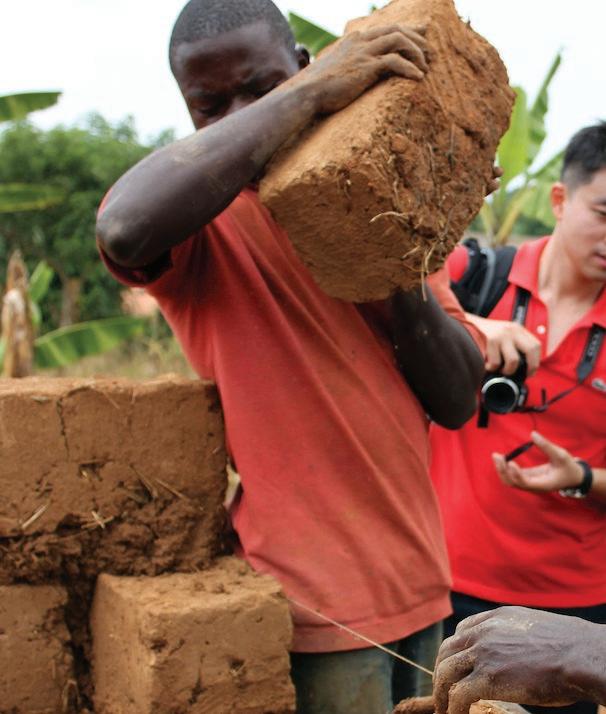
straight: the best estimates I’ve seen suggest that we have about 350 years of phosphates available, and that presumes that we have no improvement in the technology used to mine it over that time, no great improvement in its efficiency of use (including recycling) and no major new discoveries of resources. Some reports suggest more than 1,000 years of supply remains.
It’s good to think long-term about such a critical, finite and irreplaceable resource and to conserve it. It’s also good to reduce the disruption of our biogeochemical cycles by reducing mined inputs. But it’s also important to focus efforts where the science supports them. We’re not running out of phosphorus, but we are running out of quality freshwater.”
Matt Scholz , research professor, phosphorus sustainability“
I ran a program called GlobalResolve to work with underserved communities in basic problems like clean water, agriculture, health care and education. The most common misconception is that the communities gain the most benefit from our work, and the truth is the opposite: We gain much more than the communities. We learn from them about life issues and become totally impressed with their energy and knowledge and realize that they know how to solve their problems, but just don’t have the resources.
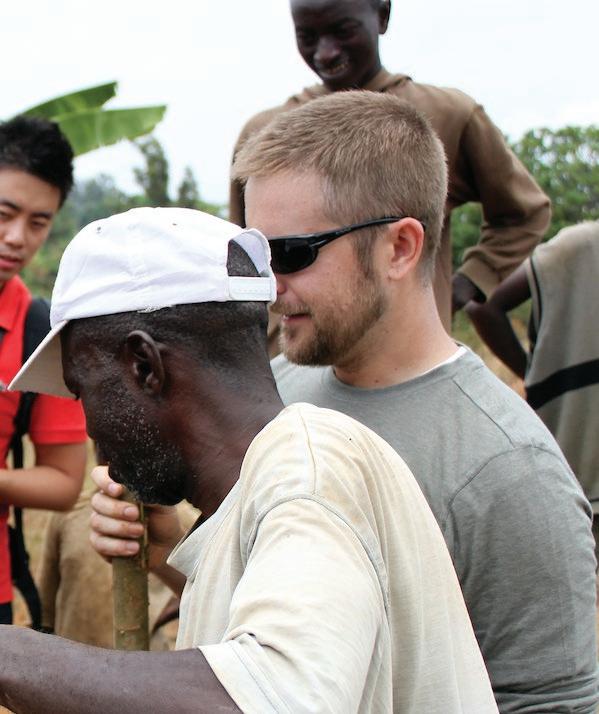
Instead of arriving in a community with a set of solutions to assumed problems, we shifted to always listening first and arriving with no agenda until we collaboratively develop a plan with the community. Underserved communities are too often disrespected and we are often too confident in ourselves. It takes a recognition of equal collaboration to improve conditions for both of us.”
Mark Henderson , President’s Professor emeritus, engineering“
The most common misconception: Architects need only be responsible for the operational energy and operational carbon of projects for which they are responsible, rather than taking embodied energy and embodied carbon into account, as well as a full life cycle assessment inclusive of an end-of-life strategy (or better yet, planning for future expansion or adaptive reuse) for the project. Much of my current work is focused on expanding the field to not only look at the entire life cycle, but to work collaboratively with the stakeholders who are both ‘upstream’ (planners, policymakers, real estate developers, financiers) of architecture, as well as ‘downstream’ (construction managers, facilities managers, occupants, community members) of architecture.
The built environment is responsible for nearly 40% of greenhouse gas emissions, 70-75% of energy consumption, 30% of water consumption, and 30% of effluent waste. The built environment is also responsible for a number of social injustices. The only way for true sustainability in the built environment is for architects and engineers to help align the full end-to-end value chain of the built environment to help lead the (re)alignment of policy, finance, design (from urban/site design to building systems), construction, facilities management and operations, and end-of-life repurposing of what we design to make our relationship with the environment a regenerative relationship.”
 Philip
Philip

Horton , clinical associate professor, architecture
“
One common misconception of religious studies is that it is primarily about the study of ancient texts, and especially ancient theologically oriented texts. A related misconception is that scholars in religious studies aren’t engaged in work that is directly related to culture, politics, and contemporary issues and societies. I think it can create a conceptual box that is overly or
unnecessarily limiting to the breadth of topics, methods and areas of expertise that people working within the field have and can contribute. In reality, ASU faculty who work in this field have projects that are deeply connected to political violence, immigration, gender, race and climate change, among others. It is a field that is highly interdisciplinary and therefore can have a lot to offer to fields and collaborators, including those in non-humanities disciplines.”
“
The most common misconception is that sustainability is just about the environment, and that you can achieve sustainability by focusing solely on environmental issues. The obstacles to implementing sustainability solutions are often economic or social rather than environmental. Researchers and practitioners now increasingly recognize that to effectively address a wide range of community issues requires working across silos. For example, air quality in places like Phoenix or southern California is related to transportation, housing, employment, safety, well-being and so on. Sustainability is about the interconnections between environmental, economic and social objectives. You can’t have a sustainable society without addressing all three of these dimensions. Having good tools to visualize how they all work together helps people understand synergies and potential co-benefits.”
Mark Roseland , professor, sustainable community development“ One of the key challenges regarding the image of the humanities both within academia and with regard to the larger public is that the humanities are often reduced to the English department and the study of literature. However, humanities disciplines include history, philosophy, religious studies, international culture, languages, cultural anthropology and sometimes art history.
Another misconception is that the humanities do not draw on rigorous methods of investigation, which reflects an unfamiliarity with the research practices of humanities scholars. Overall, it leads to a lack of respect for the value of the humanities. This leads to a lack of humanities knowledge in both academia and the general public, which has consequences when it comes to addressing a wide range of problems, from climate change to international conflict. It also results in fewer funding opportunities for humanities scholars. Knowledge produced by humanities disciplines is crucial to addressing current challenges, including climate change, international conflict and social justice.”
Nina Berman , professor, international letters and cultures
As extreme weather events become more frequent, students from across Arizona State University gather to provide humanitarian aid. These efforts do not involve international travel — it is likely that these students will never meet the people whose lives were impacted by their work.
YouthMappers ASU is part of a global network of 377 university chapters in 72 countries. Their mission is to increase visibility through geospatial technology. Patricia Solís, co-founder and director of YouthMappers, said increased visibility via mapping allows for better data collection and opportunity for humanitarian aid.
“If you can’t see the problem, you can’t address the problem,” said Solís, a Senior Global Futures Scientist who also serves as the executive director of Knowledge Exchange for Resilience at ASU.

In the aftermath of the recent earthquakes in Türkiye and Syria, YouthMappers ASU members
gathered in a conference room at the Walton Center for Planetary Health. They used the OpenStreetMap platform, which combines satellite imagery and computing technologies, to provide free and updated maps. These updated maps are then used by non-government and aid organizations, who can create tasks related to their data needs.
One way mapping serves communities is by providing updated imagery of an area before and after a natural disaster. By comparing older to newer images of the Earth’s surface, there is an opportunity to direct more support toward the areas hit the hardest.
“This is very connecting work,” Solís said. “Mapping provides a window into what is happening in the world, but it is also a platform of solidarity for each other. Everyone here cares about the future of the planet as a whole. YouthMappers channels young people’s energy and perspective towards our shared goals.”
YouthMappers ASU not only provides mapping aid to other countries, but it also receives support from other chapters. Solís said Arizona has received mapping assistance aimed at better understanding the impact of extreme heat, particularly for those living in manufactured homes. Because some of these locations are more remote, more thorough mapping is needed to fully develop heat mitigation strategies.
“We don’t actually have a good database on that for our own work, so we have also put out a call for help with this particular effort,” Solís said. “We had help from YouthMappers in Uganda, Kenya, Bangladesh and more — there are hundreds of YouthMappers helping with our own disasters here in Arizona.”
Natalia Arruda, a graduate student in urban planning in ASU’s College of Liberal Arts and Sciences and president of ASU’s chapter of Youthmappers, said the impact of their work has often compelled her and other members to stay at their sessions — sometimes referred to as “mappy hour” — later than scheduled to continue mapping.
“To use heat in Arizona as an example, the data that is collected can be used to guide the location of more cooling centers,” said Arruda. “But on a larger scale, students are the ones doing this work. A lot of us who are involved with YouthMappers are concurrently doing our own

research. If mappers are linking humanitarian and collaborative mapping with their own research, they are often identifying blind spots in their desired fields before they even graduate from school.”
Solís said that as climate change further accelerates extreme weather events, mapping will continue to be an increasingly important tool to mitigate the consequences.
“There are a billion people on the planet that are not represented on a map, and they are often the ones most vulnerable to climate change and other kinds of disasters that are happening, both elsewhere and here in Arizona.”
Solís said that as the planet’s systems continue to adjust based on human action, YouthMappers not only assists in humanitarian aid but also in elevating future leaders. By providing young minds with the resources to do work with real impact, they are empowered to continue that work in their lives beyond school. Solís pointed to the work of her current students and YouthMappers alumni, such as Arruda, Abdulrahman Alsanad, Maryam Shafiee Shakib and Katsiaryna Varfalameyeva.
“We need to be able to involve the innovators: students and young people. We need their minds and their voices,” she said. “Our future leaders are already leading, right here and right now. ”

Our world requires humans to act, urgently, so that we may repair and relieve the stresses we as a global society have placed upon it. Groups from around the world have been working to realign our planet’s residents with our planetary systems, but not all have gained the traction needed to be successful.

In September 2022, the inaugural Global Futures Conference (GF22) convened more than 200 committed global stakeholders to establish the 10 Must Haves Initiative, a comprehensive set of “Must Have” areas, and align a set of “Must Do” actions that can lead the change necessary to provide an equitable and just future for all. To take the next step, our world needs an engaged and committed alliance of global citizens who have authority and access to implement these Must Haves and Must Dos. This is the purpose of the GF23 Global Futures Conference.
“Last year’s conference was an opportunity to take a hard look at our potential futures,” said Peter Schlosser, vice president and vice provost of the Julie Ann Wrigley Global Futures Laboratory. “We are failing to meet the goals humanity has set for itself to repair our relationship with Earth’s life-supporting systems. We cannot go back in time. We must plan for a future based on our current outcomes. This conference builds upon last year’s work to finalize and implement our actionable — and attainable — path towards a future where all may thrive.”
This year’s conference will once again take place in New York City from Sept. 19-21, coinciding with the United Nations General Assembly meetings, New York Climate Week and other key international convenings that allow this conference to work with people who are invested in planetary health at many scales and in diverse ways. The people represent the public and private sectors, science and academia, Indigenous communities and youth from around the globe. Their charge will be to actualize the bold steps needed for governments, corporations and multilateral institutions to push the boundaries of discourse on how we can, and must, act to save our planet.
The combined 10 Must Haves provide a global contingency plan that spans disciplines, sectors and geographies to halt the path toward irreversible and destructive changes to planetary systems and promote the transformations that are urgently needed. Through a series of working
sessions, experts will identify pathways for actions that support these conditions by leveraging coordinated political will, private sector innovation and the demands of an informed civil society.
The conference is convened by the Julie Ann Wrigley Global Futures Laboratory, The Earth League and Planet, in addition to being a part of The Nest Climate Campus, the official event partner of Climate Week NYC. The GF23 steering committee includes leading minds in climate science, innovation and policy.
It is through meaningful change and innovation that humanity can make global transformations. Those who engage with the working sessions, conversations and speakers at GF23 will guide these much-needed transformations: a coalition working for a future of opportunity rather than sacrifice.

1. A limit of global warming as close to 1.5 C as possible by 2050.





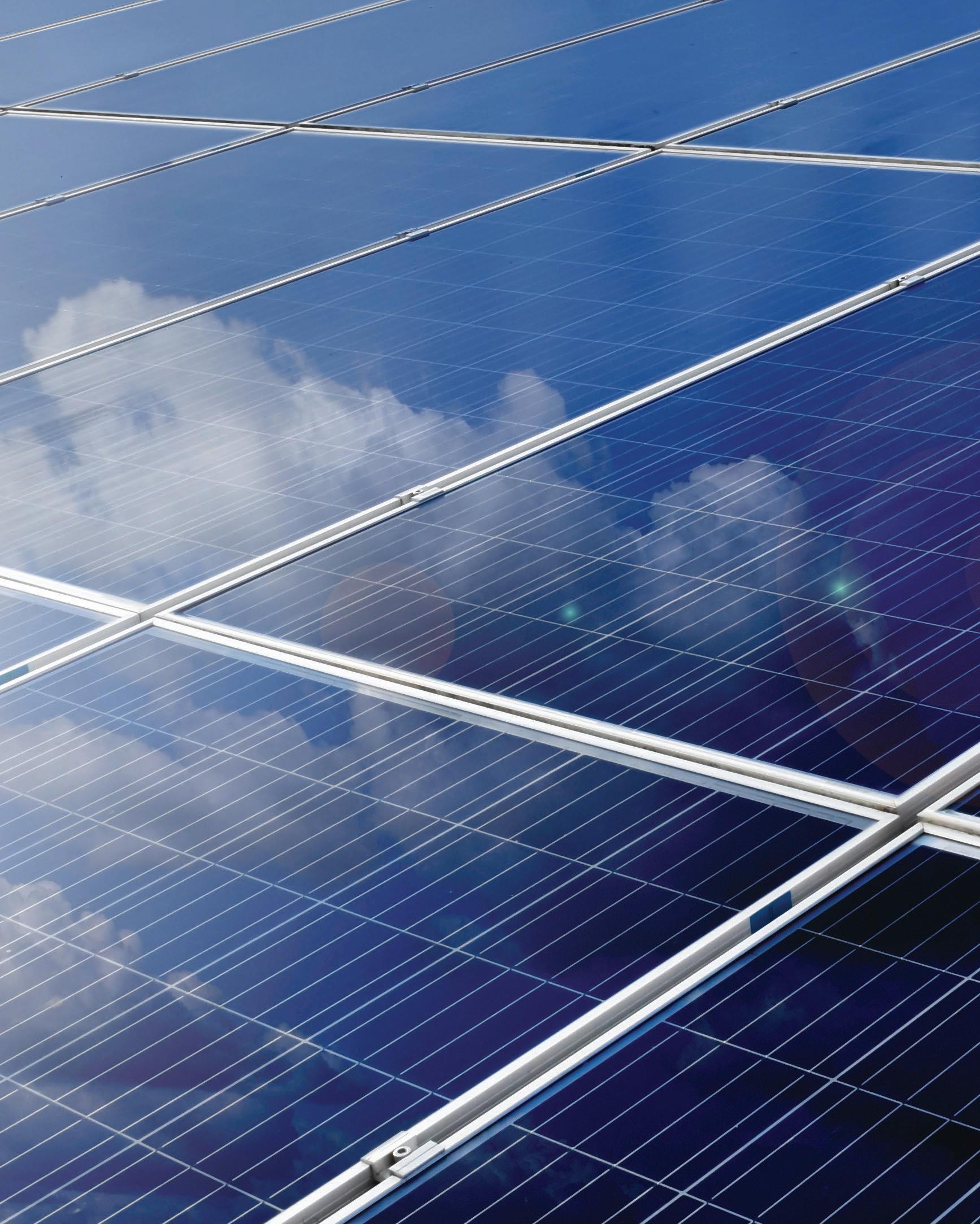
2. An immediate halt and reversal of the loss of nature’s functions and diversity.

3. Economies that operate within safe and just planetary boundaries.
4. Equitable access to resources needed for human well-being.
5. Governance transformations to stay within planetary boundaries.
6. Healthy, safe and secure food for the global population.

7. Reconnection of human wellbeing to planetary health.




8. An ethical digital world providing for human security, equity and education.


9. Stability and peace in a global society.



10. A resilient global society ready to respond to planetary crises.



To attain a just, sustainable future, we must have:
